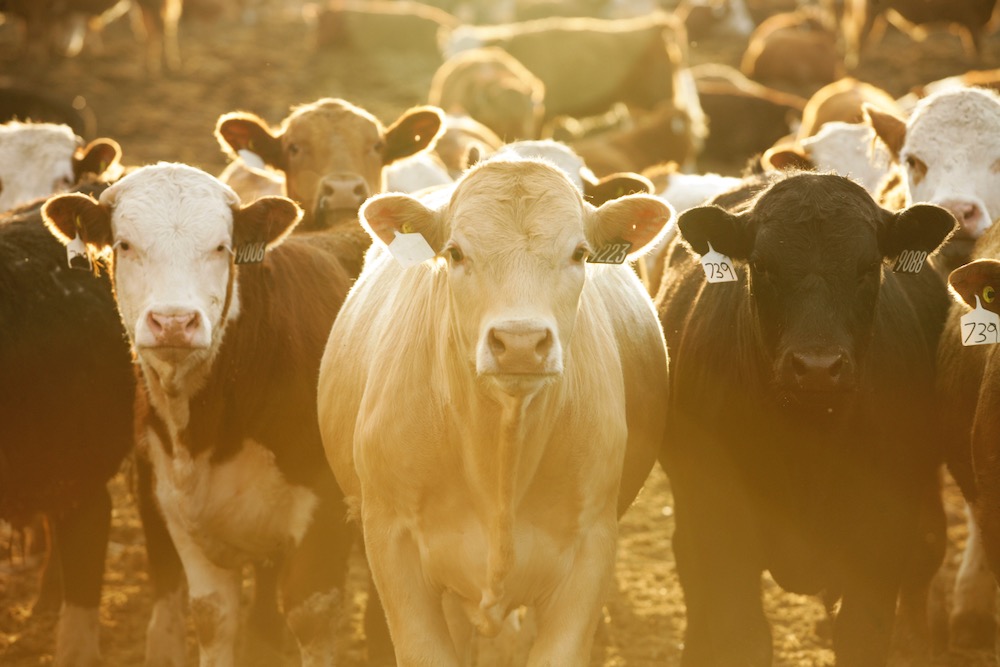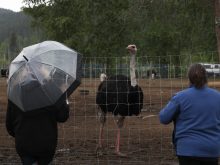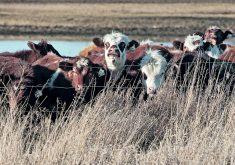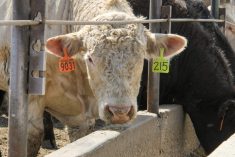British Columbia officials are ordering all commercial poultry operations to move their birds indoors after the arrival of avian flu in a flock in that province.
The Canadian Food Inspection Agency (CFIA) said Thursday it confirmed highly pathogenic avian influenza on Wednesday in a commercial poultry flock in the Regional District of North Okanagan, and has placed the affected property under quarantine.
CFIA on Thursday also reported having confirmed high-path H5N1 avian flu in a commercial poultry flock in central Alberta’s Mountain View County, between Calgary and Red Deer, on Tuesday. The new case marks the third in that county this month.
Read Also

U.S. livestock: Cattle futures drop on Trump call for lower prices
Cattle futures on the Chicago Mercantile Exchange dropped sharply on Wednesday, reacting to comments from United States President Donald Trump…
The agency said it also confirmed an H5 type of avian flu in a commercial flock on Thursday in the regional municipality (RCM) of Brome-Missisquoi, which is on the Vermont border southeast of Montreal in Quebec’s Estrie region.
The findings announced Thursday bring the total appearances of avian flu in commercial Canadian poultry flocks so far this year to 24: 11 in southern Ontario, eight in central Alberta, two in Quebec’s Estrie, two in western Nova Scotia and the one in B.C.’s Okanagan.
CFIA as of Thursday hasn’t yet specified the exact strain of high-path avian flu in the new B.C. or Quebec cases, nor the pathogenicity of the new Quebec case. It also didn’t say what types or how many commercial birds were affected in any of the new cases.
CFIA also continues setting up primary control zones (PCZs) surrounding infected premises, in which all movement of domestic birds and poultry products — whether in, out or through — is “strictly controlled” and requires CFIA permits.
As of Wednesday, 11 PCZs have been officially set up in southern Ontario and six in Alberta.
In British Columbia, where high-path H5N1 was detected in a wild bald eagle in the metro Vancouver area in February, the province has also now moved to keep commercial birds away from exposure to wild birds.
Ag Minister Lana Popham said Thursday that the province’s deputy chief veterinarian has issued an order requiring all B.C. commercial poultry flocks with 100 or more birds to be moved indoors “until the spring migration ends.”
The order, which is in place until May 13 at the earliest, applies to all commercial operations regulated by the provincial chicken, turkey, egg and/or broiler hatching egg marketing boards.
“I know this is an incredibly stressful time for our poultry and egg producers,” Popham said in a release Thursday. “They have endured so much over the past two years. They have shown they are truly resilient. We are here to help, and we will work together to get through this.”
In Saskatchewan, which in late March reported a high-path strain of H5N1 in a wild snow goose in the west-central RM of Monet, but hasn’t yet seen any cases in commercial birds, the province is also moving to keep birds from mingling.
The province’s veterinary officer on Thursday announced a temporary order, similar to one set up last week in Ontario, banning “the movement to and participation of birds in shows, auctions and agricultural fairs, as well as any other events where birds would be brought together from multiple locations.”
Saskatchewan’s order is in effect “immediately” and is in place until May 14 at the earliest.
Further east, Manitoba’s natural resources ministry on Thursday reported it’s investigating “suspected” cases of avian flu in wild birds in the province’s west.
Tests are being done on samples from “suspect birds” found at Waskada, about 100 km south of Virden near the North Dakota border, and on a single sample collected in the Dauphin area.
Manitoba hasn’t yet confirmed any cases of avian flu in commercial or wild birds in this latest run of avian flu through North America, although cases have been confirmed in both North Dakota and Minnesota, which border Manitoba to the south.
The U.S. Department of Agriculture’s Animal and Plant Health Inspection Service (APHIS) since February has confirmed high-path avian flu in commercial poultry and/or backyard flocks in 26 states, including five directly along the Canadian border.
As of Saturday, such cases have so far been found in Colorado, Connecticut, Delaware, Illinois, Indiana, Iowa, Kansas, Kentucky, Maine, Maryland, Massachusetts, Michigan, Minnesota, Missouri, Montana, Nebraska, New Hampshire, New York, North Carolina, North Dakota, Ohio, South Dakota, Texas, Virginia, Wisconsin and Wyoming. — Glacier FarmMedia Network












